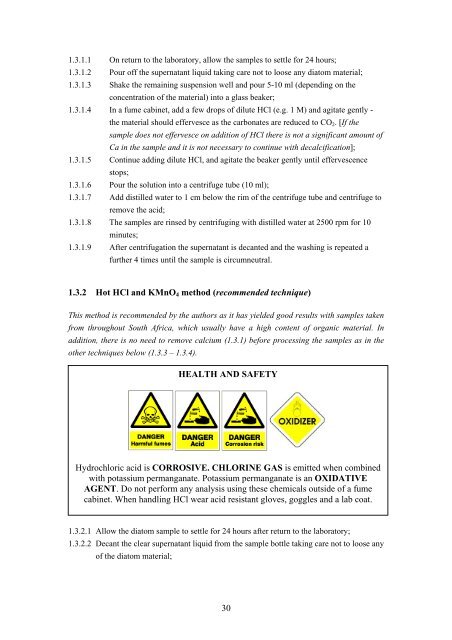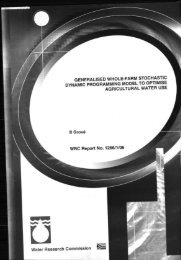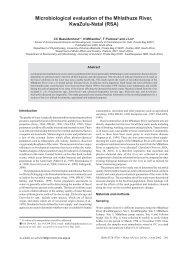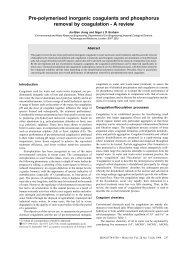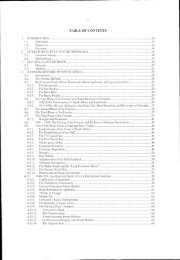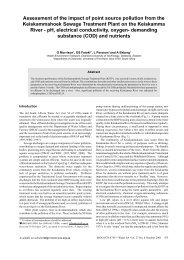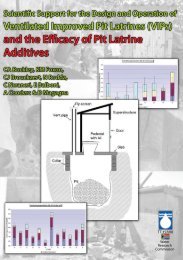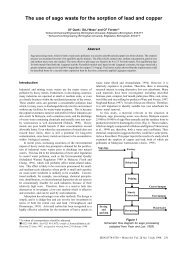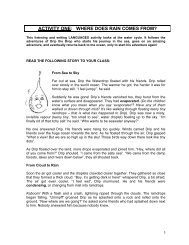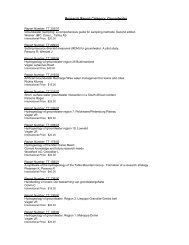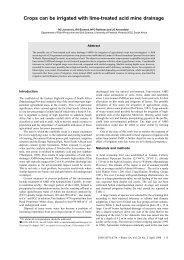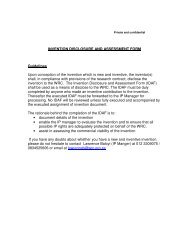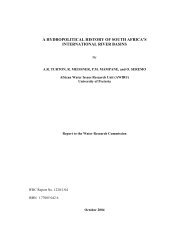A Methods Manual for the Collection, Preparation and Analysis of ...
A Methods Manual for the Collection, Preparation and Analysis of ...
A Methods Manual for the Collection, Preparation and Analysis of ...
Create successful ePaper yourself
Turn your PDF publications into a flip-book with our unique Google optimized e-Paper software.
1.3.1.1 On return to <strong>the</strong> laboratory, allow <strong>the</strong> samples to settle <strong>for</strong> 24 hours;1.3.1.2 Pour <strong>of</strong>f <strong>the</strong> supernatant liquid taking care not to loose any diatom material;1.3.1.3 Shake <strong>the</strong> remaining suspension well <strong>and</strong> pour 5-10 ml (depending on <strong>the</strong>concentration <strong>of</strong> <strong>the</strong> material) into a glass beaker;1.3.1.4 In a fume cabinet, add a few drops <strong>of</strong> dilute HCl (e.g. 1 M) <strong>and</strong> agitate gently -<strong>the</strong> material should effervesce as <strong>the</strong> carbonates are reduced to CO 2 . [If <strong>the</strong>sample does not effervesce on addition <strong>of</strong> HCl <strong>the</strong>re is not a significant amount <strong>of</strong>Ca in <strong>the</strong> sample <strong>and</strong> it is not necessary to continue with decalcification];1.3.1.5 Continue adding dilute HCl, <strong>and</strong> agitate <strong>the</strong> beaker gently until effervescencestops;1.3.1.6 Pour <strong>the</strong> solution into a centrifuge tube (10 ml);1.3.1.7 Add distilled water to 1 cm below <strong>the</strong> rim <strong>of</strong> <strong>the</strong> centrifuge tube <strong>and</strong> centrifuge toremove <strong>the</strong> acid;1.3.1.8 The samples are rinsed by centrifuging with distilled water at 2500 rpm <strong>for</strong> 10minutes;1.3.1.9 After centrifugation <strong>the</strong> supernatant is decanted <strong>and</strong> <strong>the</strong> washing is repeated afur<strong>the</strong>r 4 times until <strong>the</strong> sample is circumneutral.1.3.2 Hot HCl <strong>and</strong> KMnO 4 method (recommended technique)This method is recommended by <strong>the</strong> authors as it has yielded good results with samples takenfrom throughout South Africa, which usually have a high content <strong>of</strong> organic material. Inaddition, <strong>the</strong>re is no need to remove calcium (1.3.1) be<strong>for</strong>e processing <strong>the</strong> samples as in <strong>the</strong>o<strong>the</strong>r techniques below (1.3.3 – 1.3.4).HEALTH AND SAFETYHydrochloric acid is CORROSIVE. CHLORINE GAS is emitted when combinedwith potassium permanganate. Potassium permanganate is an OXIDATIVEAGENT. Do not per<strong>for</strong>m any analysis using <strong>the</strong>se chemicals outside <strong>of</strong> a fumecabinet. When h<strong>and</strong>ling HCl wear acid resistant gloves, goggles <strong>and</strong> a lab coat.1.3.2.1 Allow <strong>the</strong> diatom sample to settle <strong>for</strong> 24 hours after return to <strong>the</strong> laboratory;1.3.2.2 Decant <strong>the</strong> clear supernatant liquid from <strong>the</strong> sample bottle taking care not to loose any<strong>of</strong> <strong>the</strong> diatom material;30


